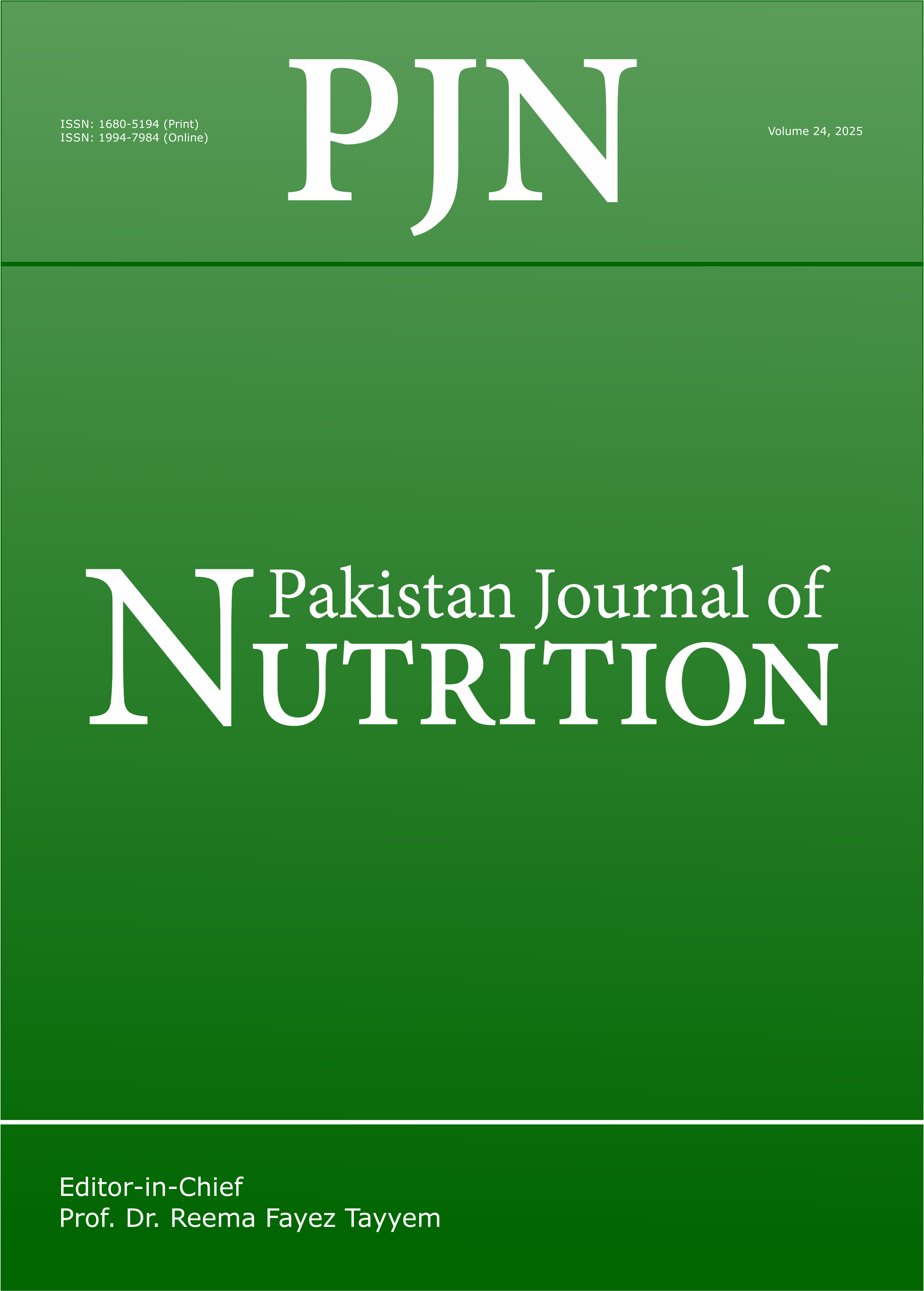Energy and Nutrients Intakes of Male and Female University Students
DOI:
https://doi.org/10.3923/pjn.2002.174.178Keywords:
Energy, Nutrients, intakes, Anthropometry, Nutritional statusAbstract
Male and female students residing in the on campus hostels were explained the aim and importance of this study. Among the students registered were 30 male and 30 female who volunteered to participate in this study. The age range of the registered students was 22 – 26 years. On the day of the registration the age, height and weight were recorded and at the same time, they were given food frequency questionnaires (FFQs). They were asked to record alternately for three days whatever they ate during the prescribed week. Out of sixty students 51 (22 male and 29 female) returned the FFQs and the rest were excluded from the study. From the anthropometry, the weight and height for the given ages were compared with the international standards. From the FFQs the energy and nutrients intake was calculated using the food composition table for all students and compared with the recommended nutrients intakes (RNIs) reported by the FAO/WHO for the same age, height and weight. The total energy consumption was more in the female students than in the male students. Eighty two percent of the male and 21% of the female students had lower energy intake than their RNIs for energy. Eighty two percent of the male students had lower relative energy from protein and 91% had lower energy from carbohydrate intake than their respective RNIs. Similarly, in 48% of the female students had lower relative energy from protein and 76% had lower energy from carbohydrate intake than their respective RNIs. The relative contribution of energy from fat was higher in 95 % of the male and 97 % of the female students than their RNIs. The mean mineral intake was lower both for male and female students with the exception that the intake of P was more than the RNIs by 18.4 and 11.5 % for the male and female students respectively. The mean Fe intake was more than the RNIs by 37.3% in male students. Similarly, the vitamins intake was lower as well, both in male and female students with exception that they were having higher intake for vitamin A and C. Apart from these nutrients, all the students surveyed had lower dietary intake of fibre and cholesterol. This study indicates that the students are at the risk of specific nutrient deficiencies and the energy requirement is mainly met through dietary fat intake instead of carbohydrate.
Downloads
Published
Issue
Section
License
Copyright (c) 2002 Asian Network for Scientific Information

This work is licensed under a Creative Commons Attribution 4.0 International License.
This is an open access article distributed under the terms of the Creative Commons Attribution License, which permits unrestricted use, distribution and reproduction in any medium, provided the original author and source are credited.

